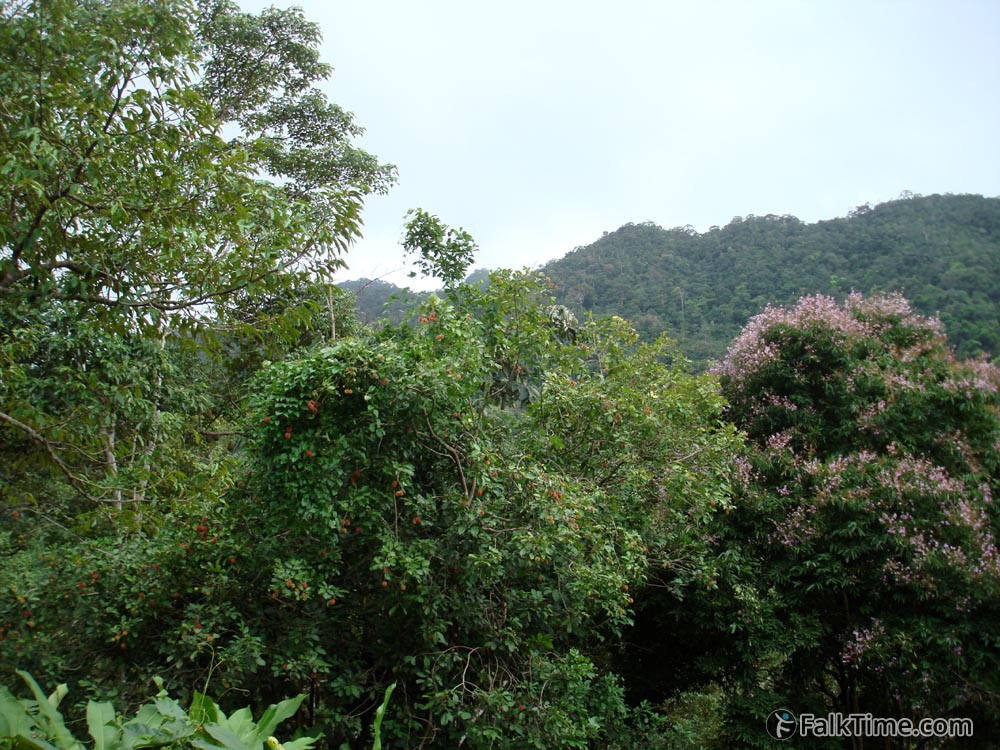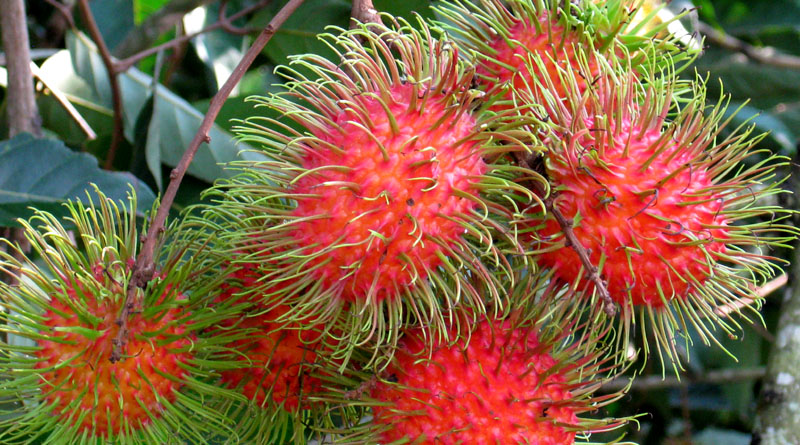Rambutan (เงาะ)
(Nephelium lappaceum)
Rambutan was introduced to Thailand in 1926, presumably from Malaysia. Rambutan has the most unusual look out of 3 species of soapberry family that are sold in Thailand. Shaggy rambutan is not that juicy as lychee, but it’s tastier than longan.
Taste of rambutan
Rambutan has nice sweet flavour. It’s not too sweet and not sour. Rambutan has no distinct fruit aroma, it smells neutral, and doesn’t give me any associations to other fruits. Consistence of its juicy flesh reminds of grapes or jelly. Due to all of these traits one can eat rambutans one by one like Thais do; probably this is the reason why Thailand is #1 in the world in rambutan production.

How to choose, transport & store
Choosing rambutans check if there are any rotted fruit – it’s easy to miss some due to long “hair” that cover the peel. If a small amount of liquid starts to bubble at the place, where was peduncle, when you slightly press the fruit, it means that this is a bad rambutan.
There are ~200 species of rambutan that include some than produce yellow fruit (with yellow-brown “hair”) and even totally green rambutans, but they can be hardly met in Thailand. That’s why I would advise to follow the rule that ripe rambutan is of red colour with green, yellow or red “hair”. If a rambutan is 100% brown (dark brown) it means that it was stored for too long and it got dry – it will be difficult to open it and no one knows, what awaits you inside.
If picked rambutan is unripe – it will stay unripe, no matter how long you will wait for it. Rambutans can’t ripen as pears do.
The dense rind of rambutan doesn’t dry out so soon as by lychee or longan, so it’s easy to peel it off. Also the rind + “hairs” makes rambutan suitable for any transportation. Nevertheless one should store rambutans in a frindge using a plastic bag, not more than 2-3 weeks. You will see also rambutans sold in bunches.

How to eat rambutan
The peel is quite thick, so it’s not that easy to tear it. If rambutans are clean (I have washed them), usually I give a fruit a little bite to break it – peel has no taste. And then I peel off the fruit.
Inside of shaggy skin you will find transparently white berry with big seed. Only the flesh is edible, so eat a rambutan like a plum. Sometimes the outer layer of seed (very thin peel) stays on rambutans flesh – it’s ok, if you swallow it. The seed is quite soft, but one can eat rambutan seeds only when they were cooked.
Eating rambutans is quite a messy thing, so I would recommend eating them next to any water source in order to wash hands later (in a room or at a beach).

When and where to buy
Rambutan is an all-year-round fruit, because Thai farmers succeed to harvest fruit twice a year. Rambutan is a cheap fruit. But usually it is cheaper from May to July. These fruit are easy to find (they are sold everywhere). The price starts from 20 THB per 1 kg.

Source of pictures without a watermark: Wikipedia, authors – PAHs, Muhammad Mahdi Karim and U.S. Pacific Basin Agricultural Research Center.




